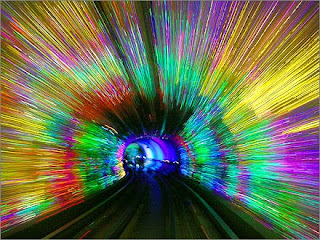Monday, September 19, 2011
Thought in Action
What is the structure of thought? Are thoughts made up of words? Superficially it may appear that all thinking is verbal. But on a closer reflection we realize that we really only verbalize when we are not able to focus on something well. We try to go slowly over the situation or event in words. Moreover if we analyze a little deeper we realize that we really don’t think in words.
For e.g. the word ‘spring’ can bring to our minds different thoughts depending on the context in which it is uttered. For e.g. when it the word spring is used while discussing the weather we immediately imagine the season spring. When we say that a person has a ‘spring’ in his step, we can easily visualize the person who is light footed and agile. Similarly the word spring can also being images of a coiled spring. So we don’t really think in terms of words. The next question is “do we think in terms of images or pictures?” Again there are times when we think in terms of images. But this is not a static image. Thinking when accompanied by images is usually dynamic and changing.
According to earlier psychological thought it was felt that the right hemisphere of the brain was creative, intuitive and artistic while the left hemisphere was analytical, rational and logical. Nowadays the thinking about how the brain processes information has undergone a sea-change. The prevalent notion these days is that the left hemisphere sees the world in sequential and ordered series of steps. On the contrary the right hemisphere is able to analyze a problem or a situation in parallel. The right hemisphere is able to view the situation holistically and intuitively.
In my opinion, our mind “works all at once”. When we are really in deep thought trying to solve a tricky problem or trying to analyze a difficult situation, our thoughts comprehend the conundrum “all at once”. Our brains attack the problem in many ways. It could attack the problem from the “outside-in” or “inside-out”. It could again be attempting to solve with a “top-down” approach or a “bottom-up” approach.
We really don’t know what is thought. The closest we can get to the thought process is to understand in terms of an executing computer program which operates on a set of data. While current programs execute sequentially the mind works in a combination of sequential and a holistic way. There are no known such real world implementations that mimic the thought activity of the brain. Recently IBM has come up with a cognitive computer which tries to mimic the interactions between clusters of neurons. This is very primitive and probably is the first attempt to mimic the brain. We are still miles away from understanding the structure of thought.
Till that time we can only think on “how we think”.
Subscribe to:
Post Comments (Atom)


No comments:
Post a Comment